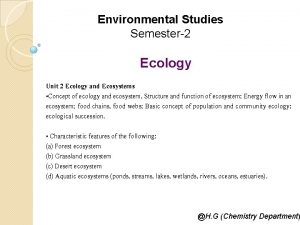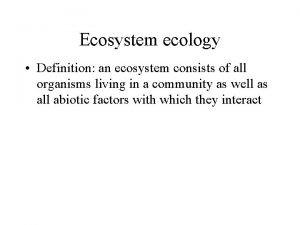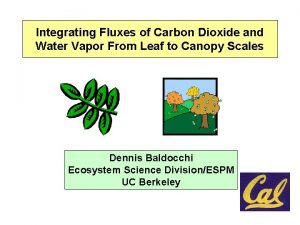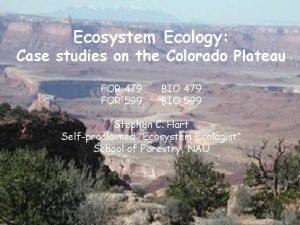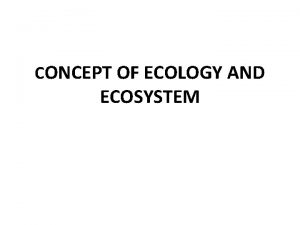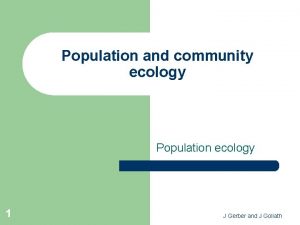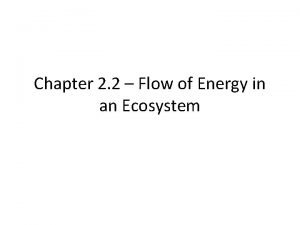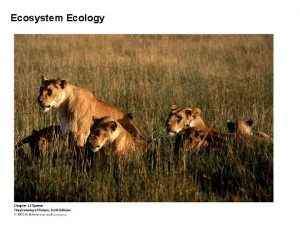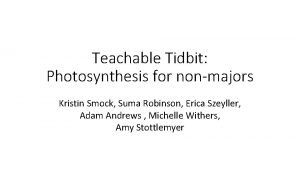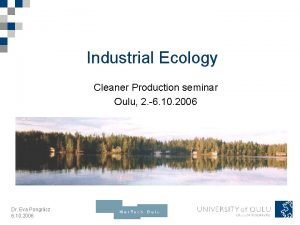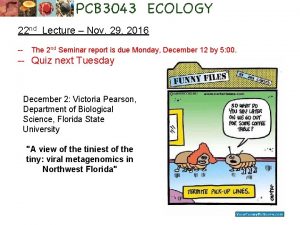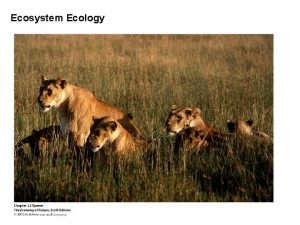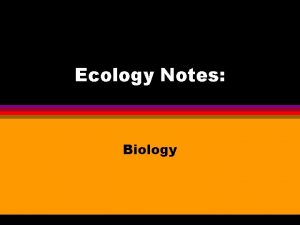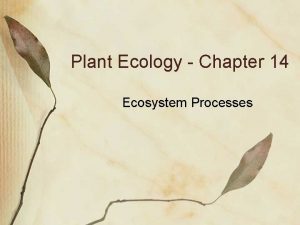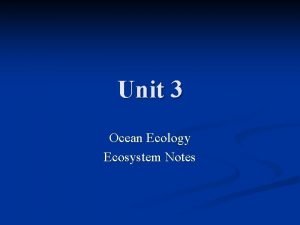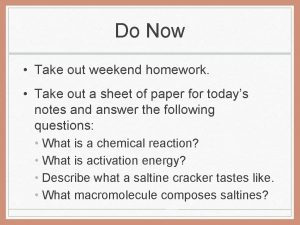Ecology Ecosystem Notes Do Now Take out your










- Slides: 10

Ecology: Ecosystem Notes

Do Now • Take out your research brief • You will take some notes today, so take out paper or do this on the back of the handout you received: – Order the following from smallest to largest. Atom Cell Body System Organ Tissue Molecule Organism

How many ecosystems did you interact with over break?

• Ecology: study of interactions among organisms and their environment • Ecosystem: all the living and non-living factors in a particular place • Biotic factors: living factors • Abiotic factors: physical or nonliving factors • Processes: actions for survival

Circle of Life Record observations of: biotic, and processes that are occuring

Categorizing our observations Biotic (living) Abiotic (non-living) Processes (actions for survival)

Levels of Organization

Smallest Largest Individua Population Community Ecosystem Biome l Definition s Examples One organism group of same species individuals that live in the same area different populations that live together Collection of living organisms and nonliving environme nt Group of ecosystems that have the same climate and communitie s Biosphere Where life exists on Earth (land, water, air, atmosphere)

Salmon species that live in the Pacific Ocean are called anadromous. This means that they migrate (= move) on a regular basis. Salmon are born in fresh water, then migrate to the ocean and return to fresh water at the end of their lives in order to reproduce. Once they reproduce, the salmon die. In fact, salmon return to the exact spot where they were born thanks to their olfactory (= having to do with smell) memory. What did this paragraph tell you about the level of organization of the salmon? Term Individual Population Community Ecosystem Biome Example from story

Research Brief Wrap-Up Take out your research brief. Go around the table and share out three main points from your research.
